BOISBUCHET RESIDENCY PROGRAMME
ANNIE COGGAN
SEASON 2021
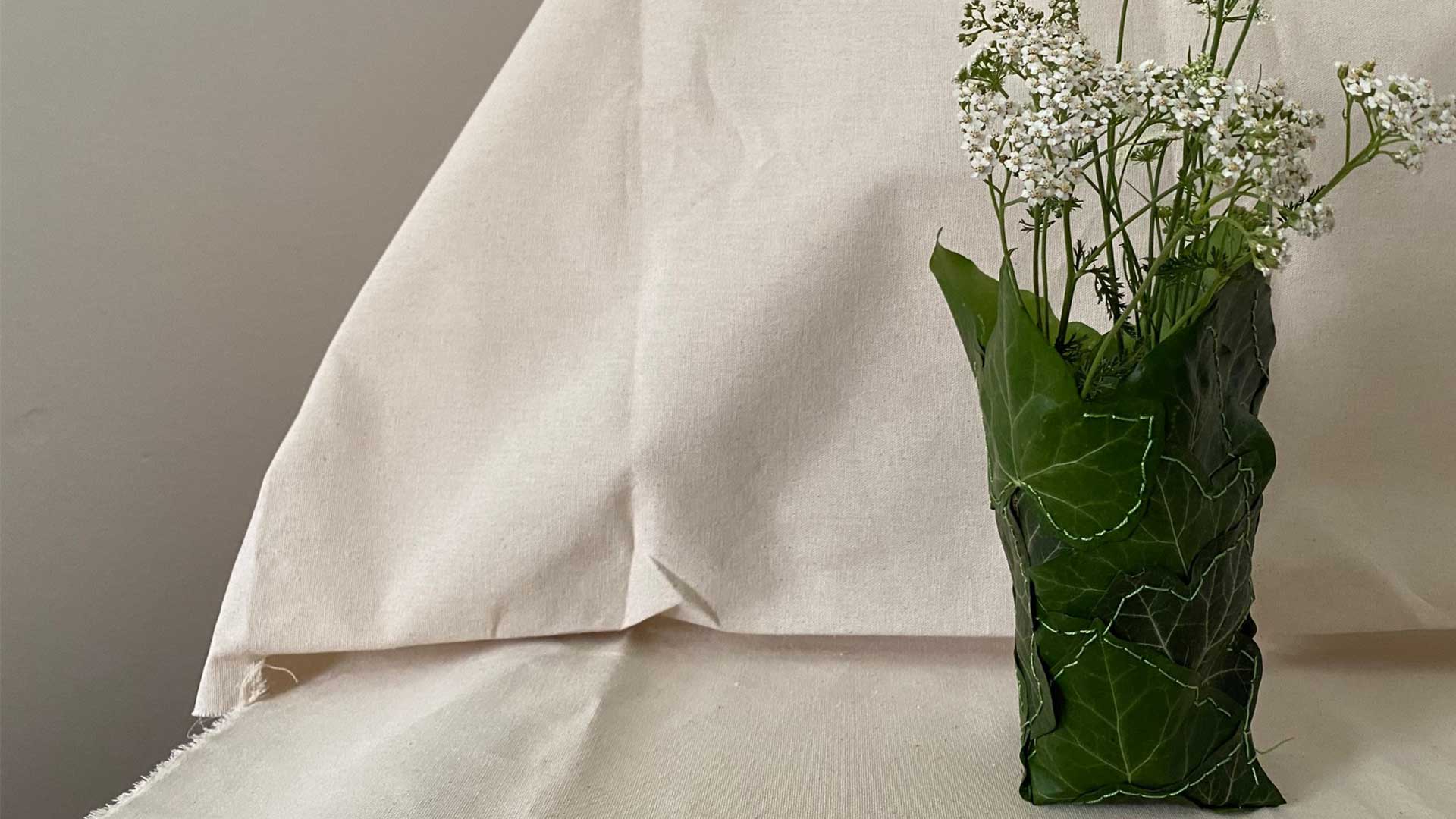
Annie Coggan is a designer, artist, educator and a principal at Coggan + Crawford Architecture and Design based in Brooklyn, NY. She currently is on the faculty at Pratt Institute and The School of Visual Arts in New York City. She has been featured in Furniture A+D, Journal of Architectural Education, design*sponge and Remodelista. She is a contributing editor for the literary magazine A Public Space and a book reviewer for the Center for Architecture’s Book Talk series.
Aboria at Domaine de Boisbuchet
The initial intention of Annie’s project was to test the potential of small-scale natural materials, leaves, branches, foliage and bring them into the domestic realm. Three series of drawings and objects were explored in parallel during the residency. The first, a series of vessels and textiles out of English Ivy, the second a series of small brooms or brushes that graft together two realms of nature via embroidery thread. And finally, a series of drawings copied from 18th century English furniture makers directories that look at the historical period’s relationship to nature and the subsequent artifice that they made in the furniture.
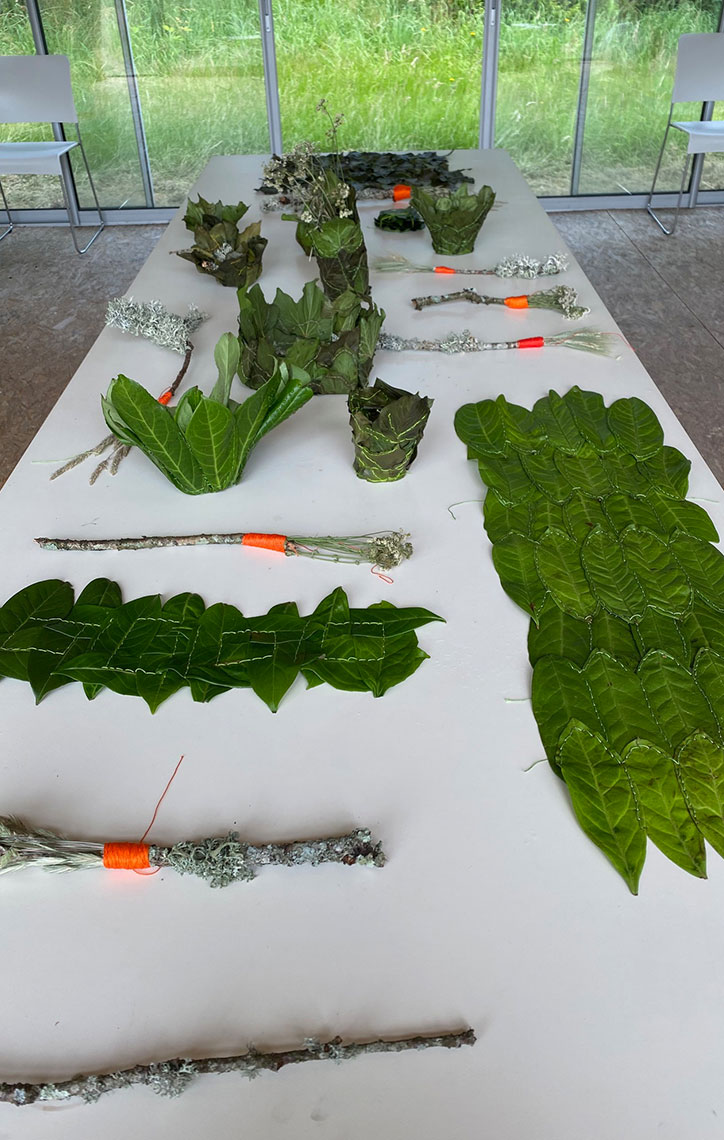
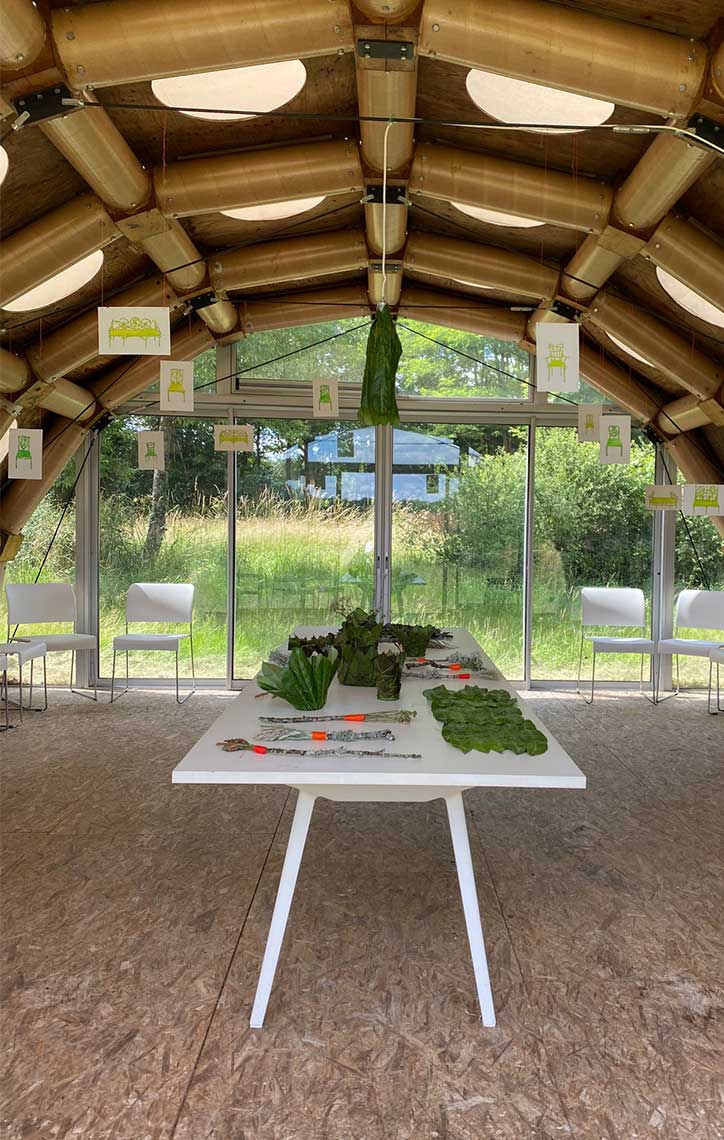
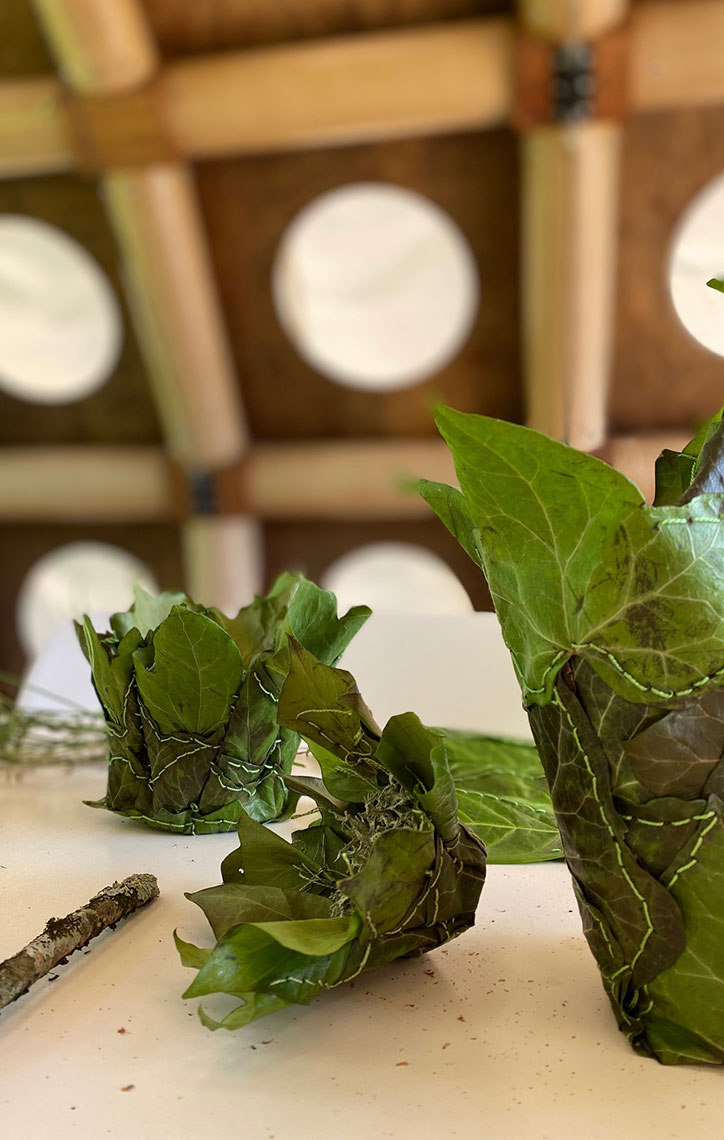
The material chosen by Annie to explore the first domestic objects, a vessel, was typical English Ivy that grows in plentiful supply on the north side of the trees throughout the Domaine. Other leaves were tested, but this leaf allowed for a more robust embroidery thread to be employed and therefore more graphic stitching could appear. The leaf was particularly hearty, taking a classic back stitch. The geometry and structural integrity of the leaf was a strong driver for what could be possible to craft a series of domestic objects. The resulting artefacts were eight vessels and a series of leaf textiles.
The second domestic object from Annie, a series of small brushes or brooms, were studies in combining two elements of nature, for instance a fallen tree branch and a sprig of rosemary, and then crafting a potentially useful domestic object out of these materials. The conclusion of this series was ten small quiet artefacts that put forward ancient ideas about utility.
“At Boisbuchet, artists are encouraged to take materials from the landscape and fully interrogate their potential. The two-week residency allowed for uninterrupted time to break out of a consistent practice and explore several threads within current work while responding to the Boisbuchet landscape and ethos of sustainability and nature within a design practice.”
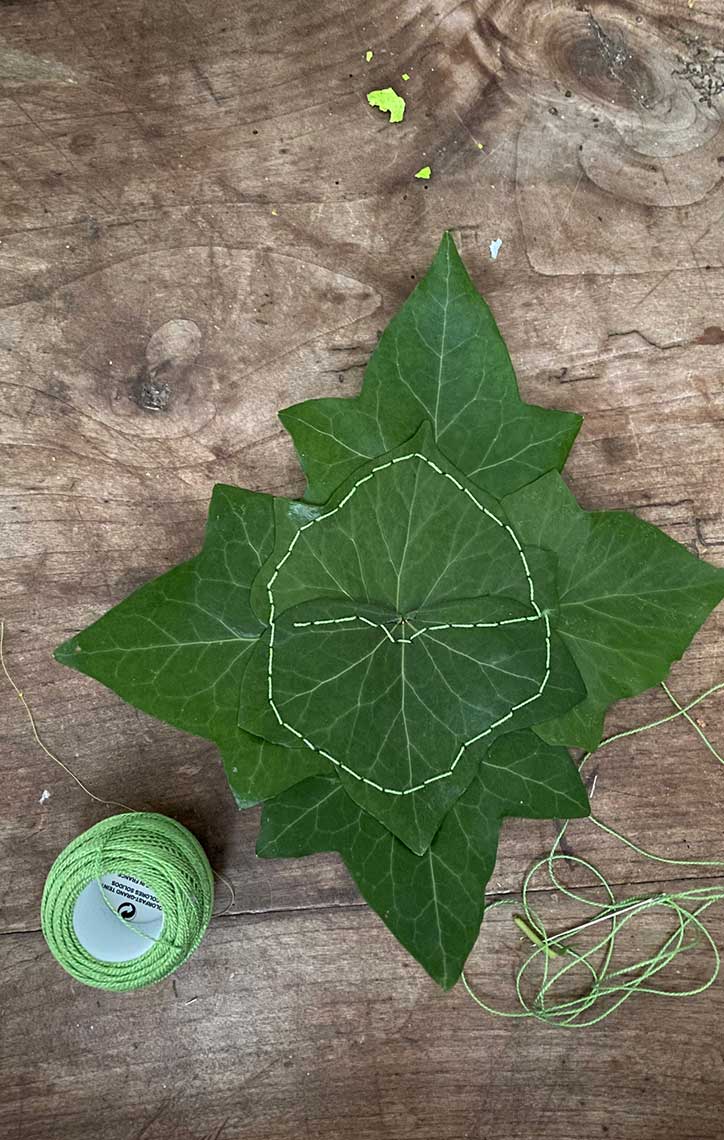
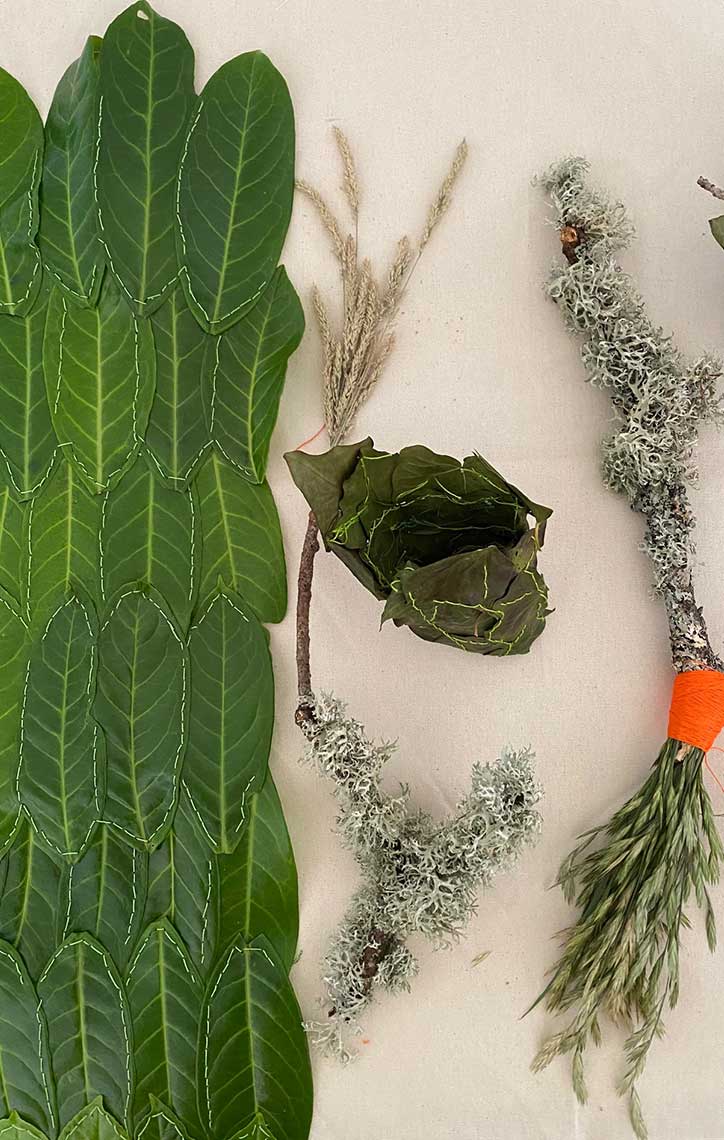
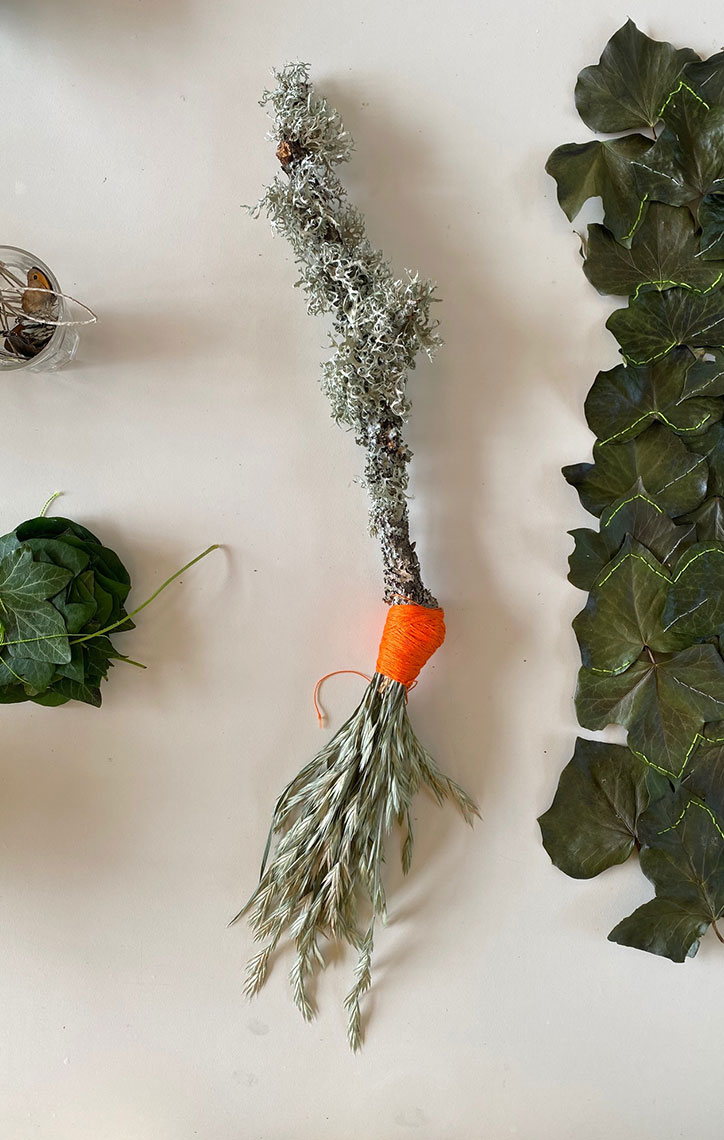

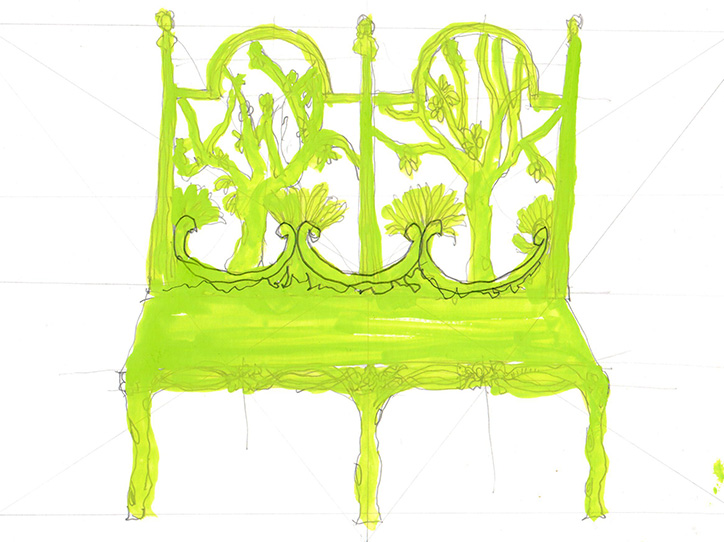
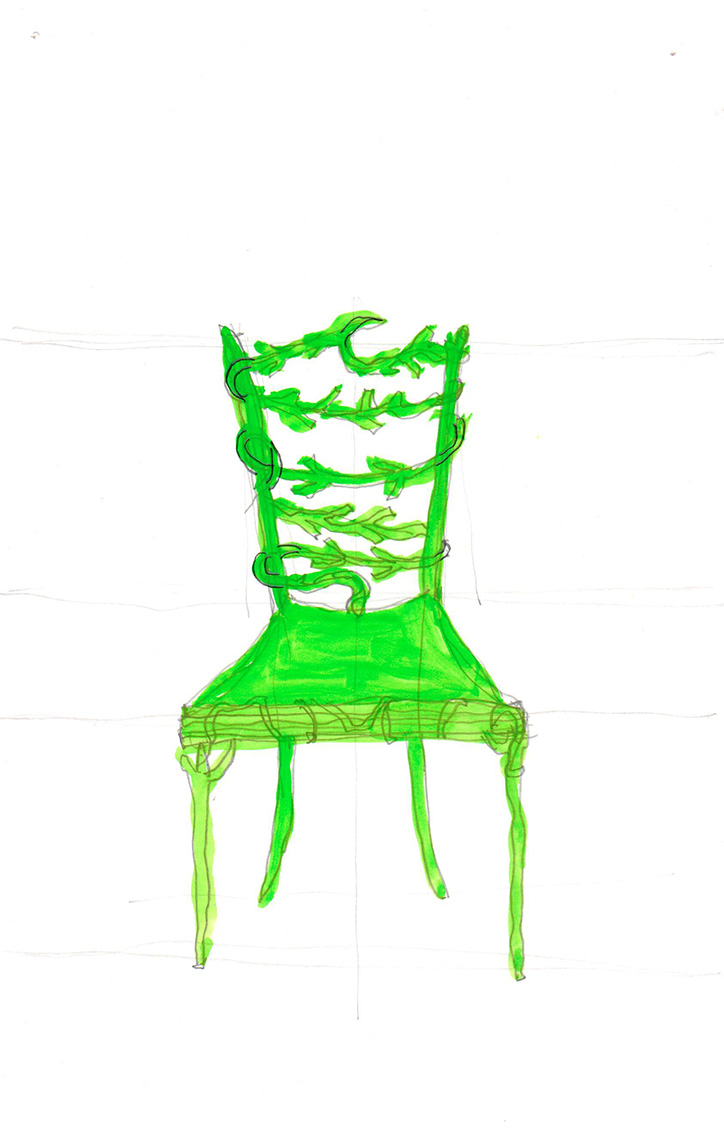
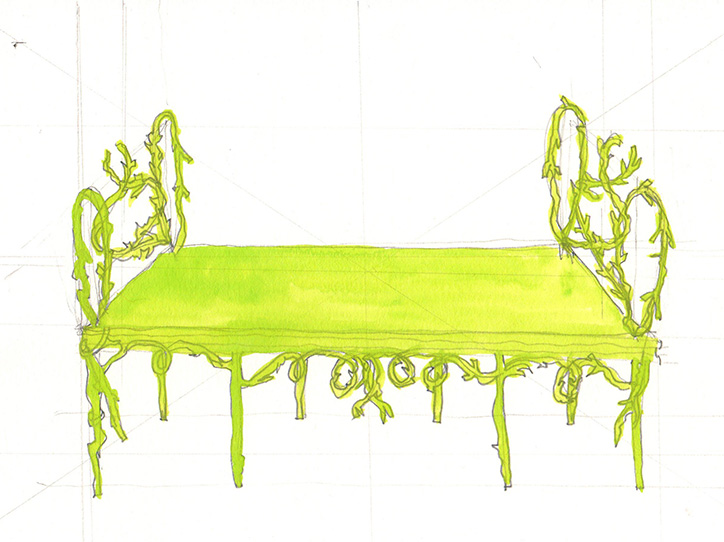
The parallel drawings project was to copy and analyse the of “Rustic Furniture” designed by 18th century English furniture makers Robert Manwaring and William Wythe. By studying these chair drawings, one can understand the 18th century’s desire to capture nature and to bring it in the interior and to question utility. Questions such as; are the chairs comfortable at all if chair arms and backs mimic exactly tree branches. Is it more important to represent nature precisely or is it to provide comfort for the human inhabitant? What do we preference in design, humans, or nature? All are interrogated while developing this series of watercolour drawings and then the thinking behind these drawings impacted the leaf vessels and tree branch brooms.
The propose of this presentation is to show parallel practices of drawing historical chairs about nature with the 18th century English Romantic ideals and making objects from nature and illustrate how they inform and critique the English Romantic ideals as well as the 21st century’s currently volatile conversation with nature.

